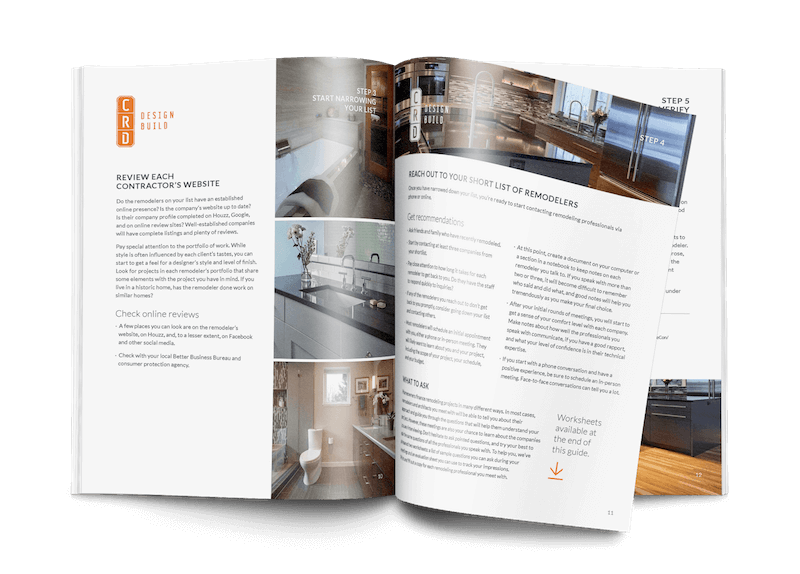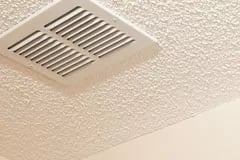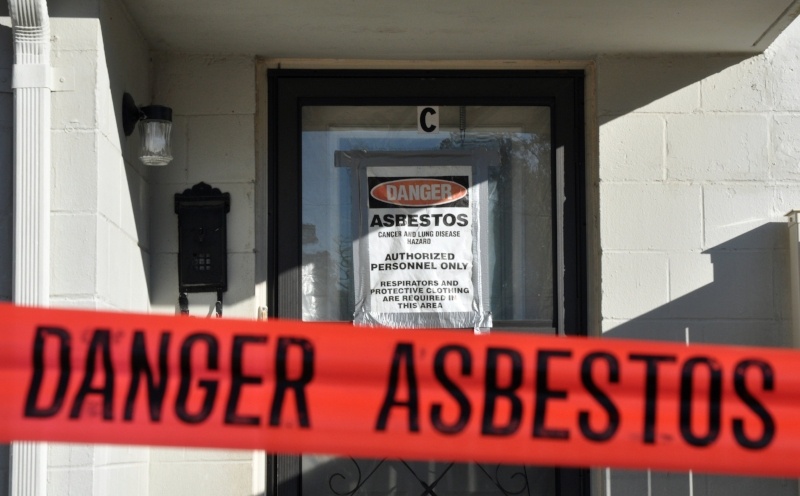
When you think of asbestos, you probably know it's bad, but how bad is it really, and what exactly should you do about it? As a Seattle homeowner, what are your risks, and what do you do if you discover or suspect you have asbestos in your home?
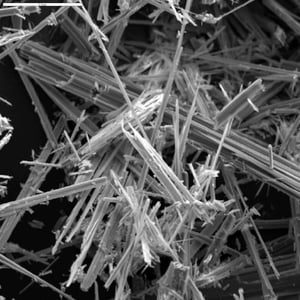
Q: What is asbestos, anyway?
Asbestos is an umbrella term for certain types of naturally occurring mineral fibers found in soil and rocks. It was commonly used in building materials manufactured starting in the 1940s and as late as the 1990s. Its purpose was to add strength and provide fire and heat resistance. Back in the day, it seemed like great stuff, so manufacturers put it in just about everything they could. It's estimated to have been used in 3,000+ products—everything from cigarette filters to school ceilings. Oops.
See also: What Is Asbestos?
Q: Where am I most likely to find asbestos in my Seattle home?
Asbestos was used in a wide variety of home products. The only sure way to know if your home contains asbestos is to test it, but here is where you will most likely encounter it in your Seattle home:
- Roofing materials, such as roofing felts and papers
- Cement asbestos board (CAB) siding shingles (very common in Seattle)
- Zonolite brand vermiculite attic insulation (not very common in Seattle)
- Textured paint and popcorn ceilings
- Sheetrock joint and patching compounds
- Some vinyl floor tiles and flooring glues
- Insulation and tapes around hot water tanks and pipes
- Oil furnaces and door gaskets
- Window putty and caulking compounds
- Chimney flue packing
- Artificial fire logs and ash in gas fireplaces
- Sink undercoatings
- Insulation in fuse boxes and around old wire
- Asbestos tapes, insulation, anti-vibration fabrics in duct work and vents
See also: Is there asbestos in your house?
 Q: Is asbestos really that bad?
Q: Is asbestos really that bad?
First of all, don't panic if you suspect you have asbestos in your home. Yes, asbestos exposure can be bad, but unless asbestos fibers become airborne, they don't pose an immediate risk. Even if you do breathe in asbestos, your risk is determined by many factors, including the frequency, level, and duration of exposure, if you smoke, other pre-existing lung conditions, and the type of asbestos you were exposed to. Not everyone who is exposed to asbestos in the air will get sick, but it's never worth taking the risk of exposure.
Asbestos exposure can lead to a variety of nasty conditions, including asbestosis (scarring of the lungs), pleural plaques (thickening and hardening of the lining that covers the lungs and chest cavity), lung cancer (a risk that's increased with exposure to both asbestos and cigarette smoke), and mesothelioma (a rare cancer of the covering of the lungs, primarily associated with asbestos exposure). Clearly, the risks associated with asbestos should be taken very seriously; the important thing is to get the facts and know how to minimize your exposure.
Q: Do I need to test for asbestos in my older Seattle home?
You can't tell if a material contains asbestos just by looking at it, but that doesn't mean you should test everything in your home. In fact, if not handled properly, the act of testing can be more hazardous than just leaving the material intact. As a rule of thumb, assume that suspect materials contain asbestos and treat them accordingly. If you need to disturb them, (in the process of remodeling your home, for instance), hire a licensed professional to do the sampling and analysis.
Here at CRD Design Build, we always professionally test for asbestos before we begin any work if we suspect it might be present on a job site. On the interior of homes, we most commonly test flooring and loose insulation. On the exterior, we often test siding shingles. If you are doing any DIY remodeling work, or you choose to work with another contractor, it's important that you or they do the same.
Q: Is the asbestos in my home always dangerous?
Not always. Asbestos is only dangerous when the fibers can become airborne and be inhaled. This is called friable material. A deteriorating popcorn ceiling is an example of a friable material that can be an immediate risk. White Nicolite paper that was commonly used under cedar roof shakes doesn't pose an immediate risk, but its fibers could be released if it's disturbed. Non-friable asbestos materials, like asbestos-containing asphalt shingles and vinyl tiles, are not considered as dangerous because their fibers are so tightly bound up that they won't float into the air, even during removal. Consult a licensed asbestos abatement company to learn how you can deal with each type of material.
Q: Do I need to remove all the asbestos from my home?
No. In many cases, asbestos can be left alone or contained. Even during a renovation, it is sometimes possible to work around asbestos without disturbing it.
Q: How can I lower the cost of asbestos abatement?
If you can avoid disturbing the asbestos in your home and don't want to incur the expense of removal, you have two main options: repair and encapsulation. According to the Puget Sound Clean Air Agency:
Sometimes, asbestos can be repaired rather than removed. This is basically a process of securely re-sealing asbestos in its location. For example, a few inches of torn, loose, or frayed asbestos tape wrap on heating ducts can be repaired with duct tape. Damaged hot water pipe insulation can be covered with a specially designed fabric available at safety equipment stores.
Asbestos insulation on heating systems can be treated with a penetrating encapsulant to secure the fibers in place. Popcorn ceilings can be painted. Be aware that these types of treatments may make it more costly and difficult if you have to remove the material in the future.
See more: Homeowner Renovation [Puget Sound Clean Air Agency]
Q: How do I remove asbestos from my home?
If your renovation plans don't make it practical to just work around or contain the asbestos in your home, you will have to make plans to remove it. Look for a state-certified professional asbestos abatement contractor. In King, Snohomish, Pierce, and Kitsap counties, the regulator is the Puget Sound Clean Air Agency. You will also want to ensure that whichever company you hire is abiding by the asbestos safety rules set by the Washington Department of Labor and Industries.
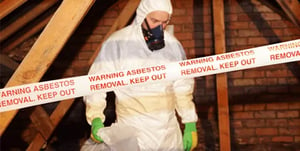 Q: How much does asbestos removal cost?
Q: How much does asbestos removal cost?
Because of all the regulations at the federal and local levels, asbestos abatement is costly. The Mesothelioma Center estimates the following costs:
- Initial home inspection: $400 - $600
- Sample analysis: $25 - $75
- Complete removal from an average-size home: $20,000 - $30,000
Thankfully, not every project will require complete removal. An asbestos-abatement plan that relies on encapsulation and partial removal may significantly lower your costs. However, many asbestos abatement contractors have a minimum charge of $1,500 - $3,000.
Q: What are the steps to asbestos abatement?
The exact procedure depends on the type of material being removed, but every asbestos abatement effort begins with protecting the worker from head to toe and preventing asbestos fibers from spreading. Surfaces that are not being abated will be sealed tightly with plastic, and a negative-pressure HEPA (high-efficiency particulate air) unit is used to avoid contamination of outside air. The material is often sprayed down with water and sealed in air-tight containers while still wet to be taken to a certified disposal site.
Q: Is do-it-yourself asbestos removal legal in Seattle?
Hiring an asbestos abatement company, and not doing it yourself, is the wisest and safest decision when it comes to removing asbestos from your home. Asbestos abatement companies will properly test, follow strict regulations and processes, and carry the right abatement removal equipment to keep you safe from exposure. However, it is legal for a homeowner in Seattle to remove asbestos from their own single-family home. Visit the Puget Sound Clean Air Agency site for exact instructions, but here is an overview of some of the steps involved:
- File an Asbestos/Demolition Notification ($30) Download the form You do not need to file the notice if you are removing less than 10 linear feet of pipe or 48 square feet of surface area of friable asbestos. Removing non-friable asbestos-containing materials, like roofing, vinyl asbestos tile, and caulking also does not require you to file a notification.
- Properly remove the asbestos. You must carefully follow the instructions published by the Puget Sound Clean Air Agency, which publishes guides to removing popcorn ceilings, sheet vinyl flooring, and asbestos board siding.
- Properly dispose of the asbestos. Take your securely packaged asbestos to an Asbestos Disposal Facility authorized to receive it. You will have to complete and bring an Asbestos Waste Material Shipment Record (PDF) with you.
Again, it is strongly recommended that you hire an asbestos abatement company, even if it is not legally required.
See also: Is Do It Yourself Asbestos Removal Legal?
Q: How can I find a licensed asbestos abatement contractor in Seattle?
A good place to start is with the Washington Department of Labor and Industries, which publishes this list of all asbestos abatement contractors who have received certification. You can click on the company name to view any recent safety violations.
At CRD, we have worked with American Environmental Construction.
Asbestos Resources
- Guide to Hiring an Asbestos Abatement Company [Asbestos.com]
- If you need asbestos assistance, you can call the Asbestos Program of the WA Department of Labor and Industries at 360-902-5514.
- Asbestos Abatement Contractors List [WA L&I]
- Washington State Department of Health Asbestos Information Page
- Environmental Protection Agency Asbestos Page
- Asbestos FAQs [Puget Sound Clean Air Agency]
- Homeowner Renovation [Puget Sound Clean Air Agency]
- Asbestos Disposal Facilities [Puget Sound Clean Air Agency]
- How to Properly Remove Spray-on “Popcorn” Ceilings From Owner-Occupied, Single-Family Residences Only (PDF) [Puget Sound Clean Air Agency]
- How to Properly Remove Sheet Vinyl Flooring with Asbestos Backing From Owner-Occupied, Single-Family Residences Only (PDF) [Puget Sound Clean Air Agency]
- How to Properly Remove Cement Asbestos-Board Siding From Owner-Occupied, Single-Family Residences Only (PDF) [Puget Sound Clean Air Agency]
Starting a remodel
If you are planning to remodel your home, a good place to start is with a licensed contractor or designer. Our team here at CRD has decades of experience renovating older Seattle homes that contain asbestos and will handle all the details to keep you and your family safe during and after the remodel. If you are interested in discussing your unique situation, please don't hesitate to get in touch.
Note: We make no claims or warranties as to the completeness or accuracy of the information on this page. We encourage you to confirm all information you read here with the appropriate regulatory agencies. Any action you take based on the information on this website is strictly at your own risk.
Guide to Hiring a Remodeler
This comprehensive guide walks you through all the steps of choosing who will design and build your project, vetting remodeling companies, and ensuring that you have the best experience.
